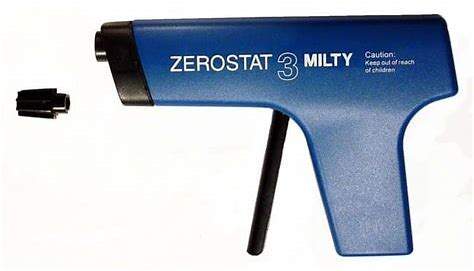Won’t work, because the clear coat will set up. When acrylic cures, it is (typically) no longer water soluble. You could sub hair spray. That’s a common technique. Recommend you watch a few tutorials first, though.
You are arguing that it looks good enough? She looks nice, but would look even better with one less coat of paint thickness. Its simple physics.
I remember those greasy parts. Some horrible sticky stuff.
There was also a small puddle in one of the plastic bags and it had soaked into the carton material of the box as well.
While I like and typically follow the guidelines of fewer coats of paint is better, it’s good to frame that in the proper context.
Philosophy is one thing but objective data is another.
One can apply up to ~ 20 coats of a high quality paint designed for painting miniatures, if its properly applied before loss of detail occurs to the naked eye on average. That’s because smallest thing the human eye can see without magnification is ~.1mm or .0039 inches.
A properly applied coat of quality hobby paint like Floquil hobby paint is typically .0002 inches.
Of course that key is properly applied ie thin coats.
If the modeler is spraying thin coats of hobby high quality paint and applying properly, ~10 coats shouldn’t pose an issue to loss of detail.
If the modeler airbrushes fire hose style ie heavy coats, all bets are off.
Paul Budzik - tools-techniques: Floquil-Paint
Note at the bottom is a pdf of the old Floquil pamphlet that addresses paint thickness and miniatures. It’s downloadable and an interesting if ancient read.
The excellent Mr Paint/MRP line of acrylic lacquer paints (in my opinion) are an excellent example of a modern paint that can spray very thin coats that won’t obscure details even if multiple coats are applied as described above. There’s others as well.
Yes, true. I had to use denatured alcohol to dissolve the grease because it just started laughing at the warm water and dish detergent.
I use denatured alcohol, ISO, or Bestine for all single piece tracks and resin kits.
No washing,no problems encountered from not doing so.
Wade, is that Southern Baptist dippin’ or Northern Baptist dippin’? Us Pentecostal folks, we put it through fire before it goes dippin’ ![]()
Southern Baptist dippin’
Woah! Forged in FIRE ![]() , then dippin’ now that’s a sure fire way to get rid of some finger prints!
, then dippin’ now that’s a sure fire way to get rid of some finger prints! ![]()
Outstanding process ![]()
Know it brother, we give full upper room treatment. We don’t want no greasy sticky nasty finger prints ![]()
My 10 cents, I wash the model before priming and painting with acrylics however i do the wash to basicly clean the plastic from any particles or fibers
You might not be the world’s greatest but we have seen some of your efforts here and there …
You are a very accomplished guy .
Well I appreciate that. My modeling skills are kind of like my military skills - like kicking in doors and shooting people in the face - (or is the other way around? I always forget) it’s just like the Toby Kieth song:
I ain’t as good as I once was,
But I’m as good once as I ever was.
Anybody use a static gun on their kit prior to painting?

My last complete model, I cleaned everything with rubbing alcohol before starting painting and that worked pretty well. I didn’t have any problems with paint coming off.